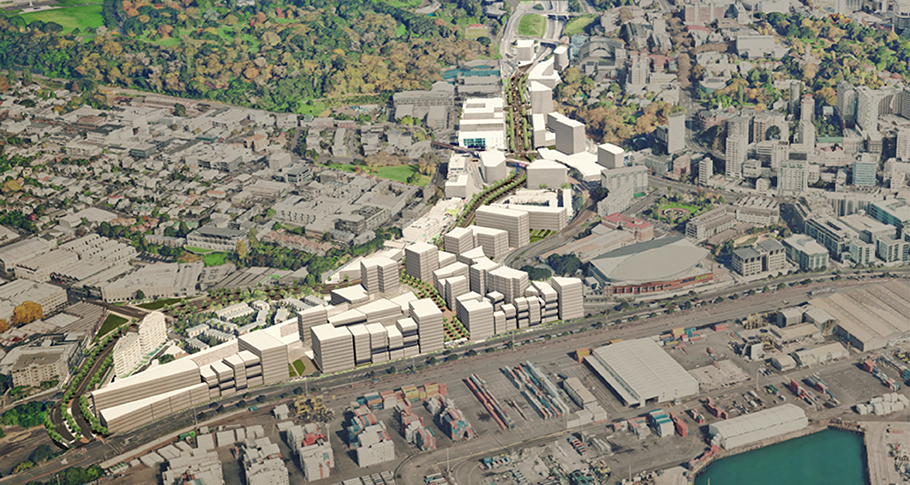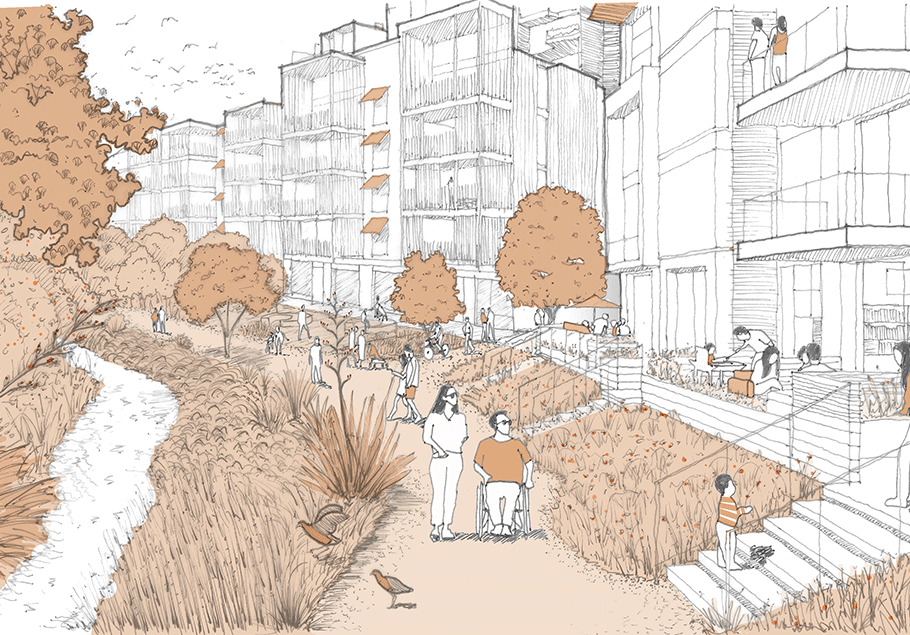Grafton Gully - creating a safer, more attractive and revitalised part of the city

About this opportunity
The vision
A safer, more attractive and revitalised part of the city. A place distinctly Tāmaki Makaurau that supports our people, communities and environment to thrive.
A tree-lined, multi-way boulevard in place of Stanley Street and The Strand improves access to and through the area. Access to the port and the eastern suburbs is enhanced. Development potential along the boulevard is unlocked with high density residential, intensive commercial and retail.
The areas are easy to move around for all. Low-speed local access to the new development is enabled by the boulevard design. Connecting across it by foot or bike is safe and easy with regular crossing points.
Revitalisation of the area provides impetus to restore the wairua of the Waipapa Hostel and its setting, contributing to the expression of identity of this area.
The opportunities
East stitch: City centre to Parnell
A well-designed, tree-lined, multi way boulevard bordered by mixed use buildings creates a safer and more attractive place for people and could improve connections between the city centre and Parnell.
For example, it could provide a safer route for children from the city centre who attend Parnell District School. It could also assist in addressing the perception that Parnell is distant from attractors such as:
- Spark Arena
- ASB Tennis Centre
- the universities
- the city centre.
Quality compact urban form
New development in Grafton Gully could provide significantly more homes and jobs for our increasing population. Enabling development close to employment, amenities and services of the city centre is important for the future of Tāmaki Makaurau. It helps us to achieve a compact urban form.
To achieve quality urban intensification, we propose to start with a high-quality tree-lined boulevard. Coordinated planning of this strategic transport route and adjacent land development will both enhance the through movements to the port and the eastern suburbs and lift the economic value of the adjacent land.
A series of neighbourhoods could be formed along the boulevard around central public spaces, attractively landscaped to integrate stormwater management and increase biodiversity.
Vehicle-free connections between neighbourhoods could offer an alternative to the boulevard for people walking and cycling.
Economic success
With a significant amount land held by the Crown in the interests of returning to iwi, plus land owned by Ngāti Whātua Ōrākei, releasing designated land with the delivery of the boulevard, offers an opportunity to unlock economic development for Māori.
It offers an opportunity to realise a city built on shared values of mutual benefit including cultural, economic and environmental outcomes.
Increases in land values provide opportunities to capture greater rates revenue.
A changing climate
Enabling development within walking, cycling or short bus ride to the city centre helps to deliver on our climate action by reducing reliance on private vehicles. Redevelopment on inner, brownfield land reduces the amount of development on greenfield land at the periphery.
Limiting carbon emissions from the construction and operation of buildings will be needed. Developing climate resilient buildings and spaces and a response to sea level rise will also be needed.
Parts of the area are low lying (close to sea level), largely flat and at the lower reaches of the catchment. The area is prone to surface flooding and at risk of inundation from future sea level rise without sea defence measures.
The design and construction of landscape and buildings will need to consider mitigation and adaptation to this. Storing and reusing rainwater on site or releasing it slowly into the ground and stream systems, will be crucial.

Homes
The area could deliver urban papakāinga, allowing communal living in a contemporary Māori context. Papakāinga provide the opportunity for greater economic independence and the expression of Māori social and cultural values. The papakāinga model also provides a possible solution to the housing challenges facing many urban Māori.
The area could support other alternative models of housing such as build-to-rent, or co-housing - where residents share amenities such as living space, gardens and other facilities.
Related opportunities





